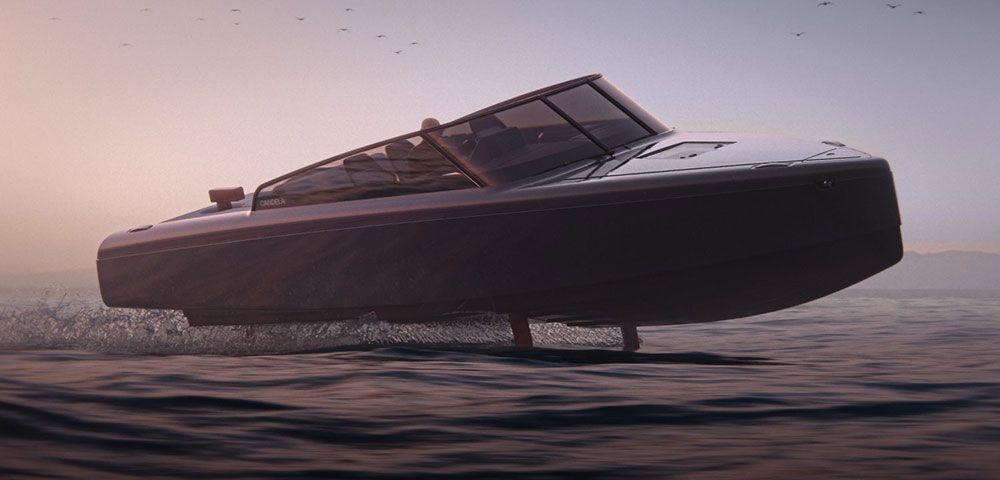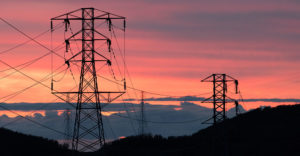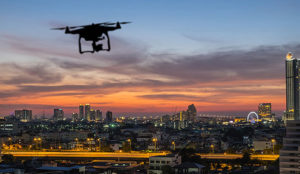Whenever a war like Afghanistan ends, a financial problem drives a country into the next war. The companies that build the weapons take a massive revenue hit because a country at peace doesn’t consume many ordinances.
But this time, thanks to climate change, there is effectively another conflict doing far more harm. That is the war to mitigate the fires on the West Coast and the weather events e.g., floods, tornados, and hurricanes on the East Coast of the U.S.
What if we took this military capacity and built “weapons” to fight fires and floods? Today we use repurposed military vehicles for this kind of service, but weapons designed for one type of conflict aren’t necessarily ideal for another.
A shift in focus of military manufacturing from killing people to alleviating disasters could also address many large companies’ problems with employees objecting to military contracts. If the efforts were switched from predominantly taking lives to saving them, the efforts should be more palatable.
Let’s talk about some of the inventions that could be used to make us all safer, switching our focus from harm to help this week.
We’ll close with my product of the week, arguably the coolest Tesla-like electric-powered hydrofoil boat that’s trying to transition boating away from fossil fuels.
Fire Mitigation
This is the third consecutive summer that I haven’t truly enjoyed living in a resort community due to the smoke from wildfires. Our home has never been at risk, but the smoke is so heavy some days that they say it is doing lung damage in line with a pack-a-day cigarette habit. One day the smoke was so thick that I couldn’t breathe outside. We’ve lost entire towns to fires that got out of control and couldn’t be contained in time.
Yet, we have developed various weapons systems that have advanced to identify enemy groups over broad geographic areas. Suppose we could use the identification technology that we currently use to find terrorists and mission it to locate forest fires before they have time to grow aggressively. In that case, we should be able to respond more quickly.
We often use reconfigured air tankers to drop water from fires. Still, these tankers take a while to get into the air because their crews need to be called up, so they can’t be maintained in a fully-ready state. There are also risks associated with weather, drones, and other pilot distractions that can lead to crashes.
The Boeing Stingray Drone is an air refueling drone that could be converted into a rapid response flying vehicle for fire elimination. The Stingray is designed against an aggressive military specification; it should be able to resist adverse weather. It has no crew, so it can get into the air more quickly. A drone’s loss of life is minimized, meaning it could fly in conditions a typical air tanker could not.
Another solution is to repurpose the new military drone swarm; so instead of dropping explosives, it drops fire-extinguishing bombs. One company already makes these. I have several in my garage because they can be very effective against small fires. Check this out:
A large drone swarm dropping these extinguishers could likely diminish a fire before it spread widely.
Coupled with a distributed sensor network like the one Huawei has developed with the Rainforest Connection (they repurpose cell phones as sensors), this network could provide far earlier warning than the old-fashioned methods we have today. A reconfigured Stingray — or a flock of them — could be launched to deal with the young fire within seconds of being identified, potentially eliminating it before more damage was done.
Human Transport
In a fire or flood, often there are situations where the roads are unpassable, yet we need to get first responders in and evacuate citizens out. Frequently, civilian or repurposed national guard helicopters are provisioned for this duty. But neither is designed to rescue people off roofs or from the front of raging fires.
Helicopters could be replaced with people-carrying drones that can land in tighter spaces, get first responders into remote locations, and evacuate rescuers and victims and from dangerous places.
There are several personal riding drones under development for both commercial and consumer use. One of the more interesting is the DP-14 Hawk being developed to evacuate an injured soldier to a base up to 100 miles away. This same drone could be used to evacuate people caught in a fire or flood zone without putting a helicopter and its crew at risk.
A larger version is the Cormorant, which can deliver cargo, like fire fighting gear and equipment, and evacuate a small team from a remote location.
There are autonomous vehicles for this purpose, but they would have limited use in a fire or flood. Still, they might be helpful in an earthquake or a localized situation like a remote hiking injury.
The evacuation in Afghanistan is slowed by the size of the transports and their inability to function well without a landing strip. Granted, they have to worry about hostile fire. But no one should be shooting at responders in events like I’m describing. So, designs that may not work on the battlefield could work to evacuate people from a disaster area rapidly.
One of the more interesting efforts is the Lockheed LMH-1, a heavy lift airship expected to be 300 feet long and capable of carrying more than 23 tons of cargo, along with a capacity of 19 passengers and two crew. Swap in people for that 23 tons of cargo, figuring 100 people per ton, and we’re looking at roughly 2,300 people. Although humans and cargo are not loaded on aircraft the same way, my point is the capability to transport large numbers of people in emergencies.
Another effort that could carry up to 3,000 metric tonnes is also under development. A water ton is 224 imperial gallons, giving this something like 672K gallons of water, which could be moved to address drought or fight a fire.
Wrapping Up
We have a problem: wars are profitable, which drives money and influence into starting these conflicts. This dynamic makes wars harder to get out of than to get into.
But with global warming, we have a battle that almost everyone supports: the war to keep people safe from fires and weather events that are crippling many parts of the globe.
If we shifted the military-industrial complex to fighting the effects of climate change, they could retain their profits and we’d be far safer. Everyone wins. The military firms get a sustainable non-war income, and we get a better defense against what is currently causing a lot of harm: a pissed-off Mother Nature.

The Candela C-8 Electric Boat
I grew up in and around the ocean, taught myself to sail, and was helming boats from when I was eight or nine years old. I’ve been on the hunt for an electric boat, and this Candela C-8 out of Sweden caught my eye.
At around 28 feet and $340K, it is too big and too expensive for me at the moment. But this is still an initial electric offering. I expect prices will come down and smaller sizes will come to market.
While expensive to buy, it is inexpensive to run and expected to cost 5 percent of what it costs to maintain a similar-sized powerboat. It is virtually maintenance-free with 3,000 hours of service-free use (that’s estimated to be 50-100 years of typical recreational use).
The Candela C-8 is a hydrofoil, which means it will be smooth over choppy water, and once upon the foils, it only takes 21 horsepower to keep it flying at its 22-knot cruise speed.

Its range on a charge is 50 nautical miles or around two hours at 22 miles per hour. That’ll get to Catalina Island from Newport Beach in California with range to spare. Granted, there probably aren’t any fast chargers at Catalina Island, so you’ll need to spend the night before returning. (I used to work on Catalina Island. When John Wayne was alive, I would wave to him on his yacht, where he’d sit out on the deck in the mornings.)
This boat is equipped with fly-by-wire steering and over-the-air upgradeable software. Expect developments in battery technology to reduce weight while increasing capacity. Future versions of this boat should go greater distances at faster speeds.
The company that makes these has offered to let me try one out, but it would require travel. Unfortunately, the Covid mess and the age of my vaccine have me avoiding travel at the moment. I do look forward to a time when I could take it for a spin.
Options include a toilet and septic tank, freshwater shower, cooler, and underwater LED lights (so you can look for great white sharks before jumping in for that swim). Unless you can find a high-speed charger near the water (good luck with that), you’ll likely have to trailer the boat to charge it. Charging time is two hours, with three-phase charging.
It sleeps two adults and two children and has seats for up to eight people. Think of it more like a tiny, inexpensive yacht than a big expensive cruiser.
This Telsa-like boat is my product of the week because it is just very cool. Imagine blowing by a yacht on foils dead silent on this hydrofoil boat. I’ll bet even Elon Musk would be a tad jealous.




























































